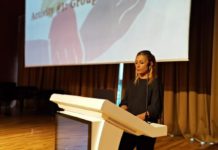I first came to Turkey over 20 years ago on a summer trip with my family, and during that time, not only did I fall in love with Turkey, but also with the mannequins in the country. It might be a strange thing to focus on in a place with so many other amazing sites, but I was immediately drawn to how people here used the human form sometimes thoughtfully, and sometimes without care.
I found there was art and humor to how people used mannequins (either intentional or not) from the ways they were displayed, to how they were transported and discarded.
For best results, click to enlarge the images.
My obsession hasn’t subsided since then – I have been documenting the mannequins around the region since I moved from New York to Cairo over ten years ago, but by far the Turkish mannequins have the most range, color, and intention. Now having lived in Istanbul for the past four years, I have accumulated a lot of wonderful images that I hope at some point to convert into a book. I also love that all of my friends now know my love of this subject and will send me pictures of mannequins that they find worldwide. If you’d like to send me some of your favorite mannequin pics, please follow me on Instagram @taratwphoto!



























